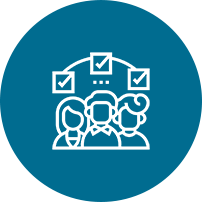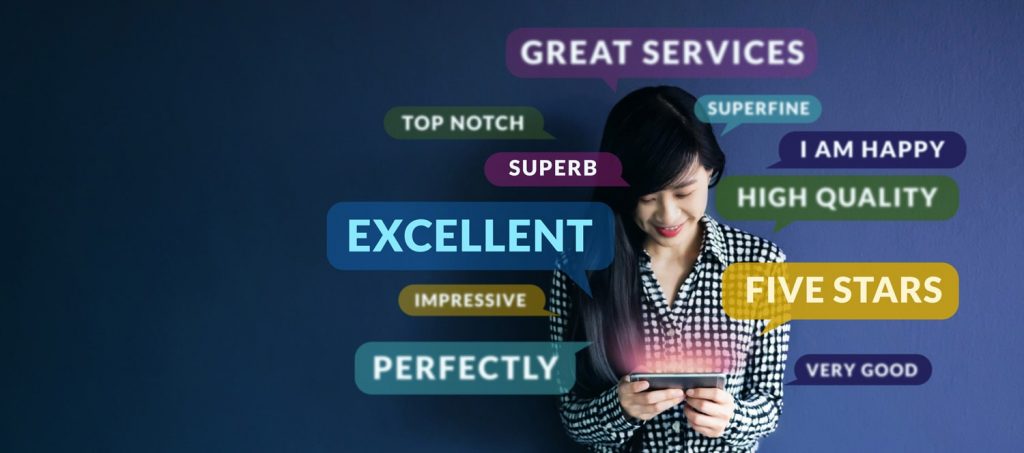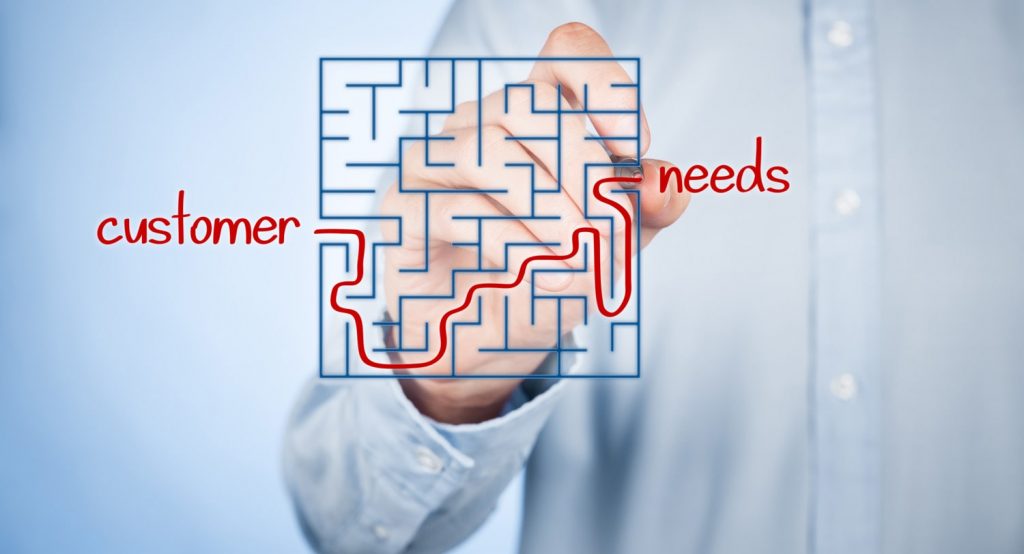The purpose of the CX guide is to equip you with all the information and tools to measure and manage a customer experience initiative effectively in 2022. Building a customer-first approach does not happen overnight – it takes both time and effort for employees and executives to create customer value and boost revenue with a customer-centric approach.
In 2022, brands need to leverage technology-driven solutions with personalized and immersive experiences for their customers.

Key Take-Aways
- Understanding CX and CX Strategy
- Top 2022 CX Trends
- Key components of a great CX Strategy
- Steps to launch a CX program
- CX Metrics
- Kickstart your CX journey with Nsight
What is CX?
Customer Experience or CX is how your customer feels about your brand. You may think that you have the perfect product or service, customer interactions, point of sale services, messaging, and other aspects – but is that enough?
Not unless your customers feel the same.
The customer’s perception is driven at every touchpoint, and brands must invest in the right people, technology, and processes to ensure that they can enable a seamless, personalized, and exceptional experience for their customers.
The five drivers that ensure customer experience success are customer data, marketing, commerce, sales, and service. It is essential to choose the right tools to deliver the desired outcomes for each driver.


Customer data
Collecting, consolidating, cleaning and securely managing customer data.

Marketing
Attracting new customers and retaining existing customers. A key focus of marketing is to evaluate the impact of all the customer touchpoints and understand how to speak the customer language.

Commerce
Manages different aspects like content, order, and experience management.

Sales
Focuses on a 360-degree view of customers (single and unified understanding of the customer journey) to approach the customers intelligently and proactively.

Service
Ensuring that customers receive a seamless, prompt, and consistent resolution whenever the customers ask for help.
5 Drivers OF CX

Customer data
Collecting, consolidating, cleaning and securely managing customer data.

Marketing
Attracting new customers and retaining existing customers. A key focus of marketing is to evaluate the impact of all the customer touchpoints and understand how to speak the customer language.

Commerce
Manages different aspects like content, order, and experience management.

Sales
Focuses on a 360-degree view of customers (single and unified understanding of the customer journey) to approach the customers intelligently and proactively.

Service
Ensuring that customers receive a seamless, prompt, and consistent resolution whenever the customers ask for help.
What is Digital Customer Experience?
Digital customer experience optimizes the customer’s journey over the brand’s digital channels. To ensure a seamless tactical digital CX, the brand must ensure that users do not experience any delay in page loads or purchase barriers on the website. If the digital channel is easy-to-use and user-friendly, digital conversions will increase. Identify the role of each channel and use it differently to solve the challenges of customers.
Strategic digital CX is building the ability to understand customer behavior. For example, abandonment of a shopping cart might not indicate a failed conversion. There could be several reasons for the mid-journey abandonment, and equally important to understand this purchase behavior.

What are the Top CX Trends in 2022?
While brands will continue to prioritize Customer Experience, some of the trends that early adopters will consider are providing enhanced immersive and hybrid experiences, rise in the use of smart devices, customer service automation, and personalization.
- Brands will seek enhanced immersive and hybrid experiences with the integration of virtual reality and augmented reality (AR/VR) technologies for engaging customers. They will compete over their ability to offer fascinating experiences over virtual platforms.
- Due to the Internet of Things (IoT) and wearable technologies, data is always around us. 2022 will see a remarkable increase in new smarter wearables like smart clothing and newer smartwatches (that will entirely focus on astounding customer experience and useful insights).
- Customer service automation will get a better with more intelligent voice assistants and faster resolutions of customer issues. More sophisticated analytics will help improve Natural Language Processing (NLP) with better understanding of written and oral human communication.
- While businesses understand the importance of customer personalization, 2022 will see a trend of understanding the right time to share a personalized offer. Thanks to advanced customer insights, personalized content can be shared with customers at a time when it will make the maximum impact.
What is a CX Strategy?
The purpose of any business is to resonate with the voice of the customer, and CX is the way to do it. Enterprises need to evolve to a customer-centric mindset and not just perceive CX to enhance business revenues. With the help of a solid CX strategy, an enterprise can start delivering great customer experiences.
If a brand can build a successful CX strategy, it can enhance brand value, build customer loyalty and retention, and drive higher revenue with increased customer lifetime value.
Nsight can help brands build insightful CX strategy to measure customer experience across channels, identify key areas that are causing poor experiences, and the best way forward to deliver an optimal experience. Our CX strategy is meant to improve the operational efficiencies of our clients, suggest focused efforts to improve customer experience across different touchpoints, and improve ROI.
To understand who owns CX in your enterprise read our blog.
What makes a great CX Strategy?
Customer Experience Strategy is the process that involves defining, planning, and documenting customers’ feelings across their journey. The purpose of a CX strategy is to define an actionable plan for a meaningful, personalized, and positive customer experience.
• Customer Experience Design
CX design is the process of creating a flawless customer experience for every point of contact. It aims to improve the processes related to solving customer issues and making their interaction easy and intuitive.
• Understanding Customer’s Expectations
Every customer has some basic expectations like high-quality customer service and fair pricing. Brands wish to go beyond – customers expect personalized interactions, connected experiences across digital channels, proactive service, and personalized messaging.
Technology can support a better understanding of customer expectations and build trust and transparency across critical elements– marketing, commerce, customer data, sales, and service.
• Customer Journey Map
Customer journey captures the complete experience of a customer. It includes all the customer interactions across all devices and touchpoints.
A customer journey map visualizes the different stages of customer interactions (from customers purchasing products to connecting with customer service for support). The map includes important events, customer motivations, and areas where customers might have issues.
• Always listening to customers
Customers are constantly sharing their stories – both negative and positive. Being attentive to real-time customer feedback for a great CX strategy is imperative. Customer feedback across different touchpoints is vital to identify the areas to improve.
• Collaborating across functions
If an enterprise can break silos and collaborate, it can collectively create a meaningful customer experience. To create an effective Customer Experience Strategy, create a value chain that clarifies their role in the customer experience journey.

How to launch a CX program?
Although it may seem daunting, the success of a CX program is deeply rooted in how well it is planned. Some of the significant steps in that direction are listed below:
• Identifying a goal
Start with a goal, which could be solving a customer challenge or becoming a leader in customer service. The CX program goal must be clear, realistic, and measurable like any other goal. The goal may evolve as the CX program matures in the enterprise.
• Involving employees
There are many highly motivated employees constantly working towards the success of a CX program. Sharing the insights of a Customer Experience program are essential to getting the employees to contribute towards it.
• Involving leadership
Any CX program with complete support from the C-suite has the maximum impact. If they see the value of the CX program, they will invest and support the initiative unfailingly.
• Choosing the right CX platform
An enterprise needs a robust platform to deliver impactful customer insights. Assess, analyze, and finalize a platform that maps back to the CX goal.
How can you measure CX?
Most enterprises measuring Net Promoter Score (NPS), a market research metric that asks respondents if they would like to recommend the brand, or Customer Satisfaction (CSAT), a performance indicator to track customer satisfaction, think that these are sufficient to track Customer Experience. In addition to NPS and CSAT, it is helpful to track progress on CX-related actions, ROI, consistently identify improvement areas and replan to invest in the right direction.
In addition to the metrics given above, an enterprise can track Customer Effort Score (CES), which measures the amount of effort that a customer must invest in getting heard. For example, they must put in the amount of effort to resolve a customer-related issue.
Customer Lifetime Value or CLV is another critical metric that measures the customer’s lifetime worth to the business (customer’s total worth over the entire period that they are associated with a brand). Businesses focus on increasing the CLV of a current customer rather than acquiring new ones as it’s a more economical option. The metric provides a multi-year snapshot of customer relationships.
Insightful data helps drive personalized relationships and gauge the impact of a customer experience program.
Transform your customers into your most significant assets with our CX solution.
Conclusion
Customers seek beyond a great product or service. They want engaging marketing, high-quality customer service, and effective customer service at their disposal. Investing in CX is compulsory rather than just a way to gain a competitive edge.
If you are still wondering if there is an ROI for a CX investment – the answer may not be straightforward. Measuring customer-related KPIs can give an indicative number to measure the impact of customer experience. A CX mindset is meant to boost customer advocacy, loyalty and reduce customer churn (factors that might not be considered while measuring the ROI).
About the Author

Rashmi Shrivastava is a data-driven, results-oriented, and tech-savvy B2B Marketing & Business Strategy Leader with a proven track record of over a decade building brands, accelerating growth, and leading digital transformation. Inherently passionate about crafting, executing, and managing the overall growth strategies, she successfully leads cross-functional Marketing and Demand Generation teams.
Rashmi has managed digital transformation projects across domains with a constant focus on building transformational CX strategy. She has supported brands to adopt a value-driven and customer-centric culture.





